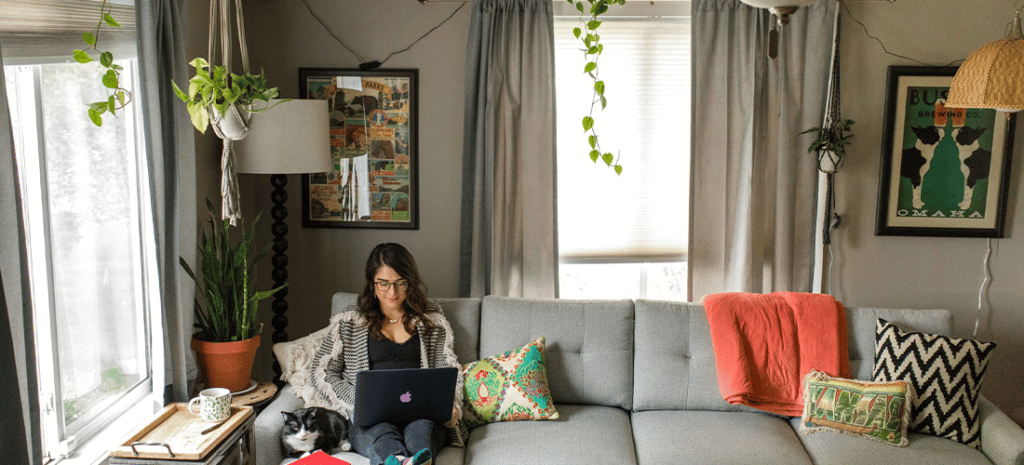
How to Pitch your Design as a Freelancer
Creatives have different tips and tricks for pitching a design to a client. While a list of the do’s and don’ts would be nice, most freelancers are discovering best practices through experience.
To help speed up your experience pitching to clients, we went straight to a successful freelancer to ask for her best tips!

Meet Evynne Doue, a designer living in Omaha, NE, who specializes in web design and branding, but also dabbles in UI/UX design, illustration, print design, and creative direction. In addition to her freelance design work, she also works as a Brand Designer at Patreon. When she’s not designing, you can find her riding her bike, exploring new places, surrounded by animals, eating delicious food, or watching The X-files.
Many web designers, after some experience with clients, start to realize what works and what doesn’t. Evynne has discovered all of this and more over the last few years, and was eager to share her stories, tips, and all the advice you could want!
Here are her 9 tips when pitching a design to a client:
- Solidify your contract
- Set expectations
- Find an environment that you work best in
- Communicate, communicate, communicate
- Educate your clients
- Presentation is everything
- Show your work sooner than later
- Find a mentor
- Don’t work alone
1. Solidify Your Contract
Contracts are extremely important, especially if you’re a freelancer. They’re a valuable instrument that defines the scope of your project or working relationship, and can help protect you and your business in the long run. It’s important to have the contract ready before the pitch so the client can sign immediately if they want to.

The process of creating contract is beneficial for you as a freelancer and for your clients, too. It outlines how to work with a designer and what the expectations are, and what everyone’s role is. For Evynne, she knows firsthand how important it is to have a detailed contract ready before the pitch.
“There’s no such thing as being too detailed or too careful. Have a “Terms of Service” agreement your clients are required to sign and make it legally binding because you can run into really horrible situations down the road if you don’t. It’s not only to protect yourself, but your clients as well. People take you more seriously when you have a really solid and well-developed contract.”
2. Set Expectations
Every client is different in how they communicate or when they expect work to be done. It’s important to set expectations with each and every client about your process and also, what their expectations for you are. Try to set your expectations towards the end of the pitch or directly after, so it’s crystal clear from the beginning of the relationship what’s expected on both sides. Some expectations you can set are the best ways to contact both parties, best times to contact both parties, and how frequently you want to communicate back and forth.
“Make sure they’re comfortable with the communication process, be as thorough as possible, and always be able to give a reason for every design decision you make.”
3. Find an Environment That You Work Best In
Freelancers have the freedom of choosing where they want to work, whether that’s a couch, a coffee shop, or even on the beach while on vacation. With freedom comes responsibility. Find a place where you know you can avoid distractions, can be productive, and most importantly can stay inspired! The work you create in a creative environment will be better quality, which will lead to a more successful design pitch.

Evynne has worked everywhere from an apartment in Germany to her living room couch, but it took her some time to figure out where she needed to go to produce great work.
“Go out and find that place where you are able to get your best work done.”
4. Communicate, Communicate, Communicate
As a freelancer, you have many jobs besides designer. You serve as a salesperson to potential new clients. You serve as the account manager, communicating back and forth with clients to keep them updated on the work you’re creating. The better communicator you are, starting from the design pitch, the smoother the relationship will be when creating the work. Evynne has learned to pick up on her clients’ communication skills, whatever they may be.
“It’s really important to pick up on people’s communication styles when you first start working with them. Pay attention to how they express their expectations and ask the right kind of questions. For some people, you’ll catch them using the same words over and over, like ‘modern and timeless’ for example, so of course you should take those words into consideration when you start to develop a design.”
Evynne has also learned that although you may match communication style, there may still be some miscommunication and misinterpretation.
When working with Gasthaus Krone, a restaurant located in Germany, Evynne learned the importance of communication while also navigating different languages. Below are some mockups and examples of the work she’s done to build their brand, website, and marketing materials.

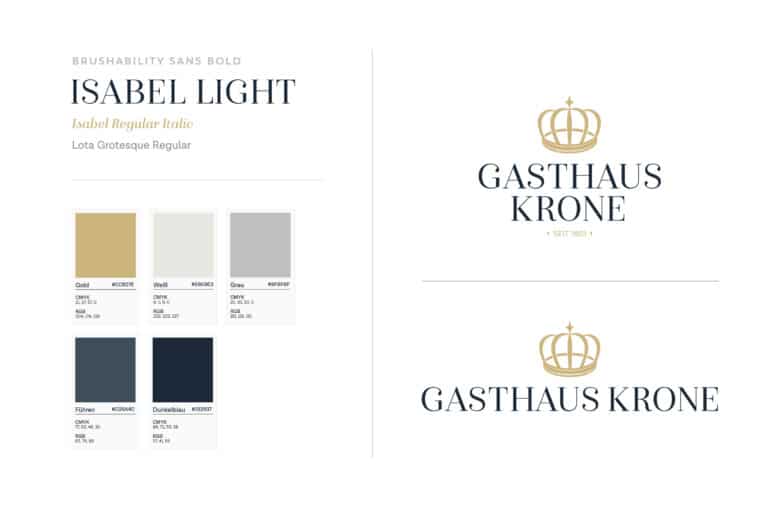
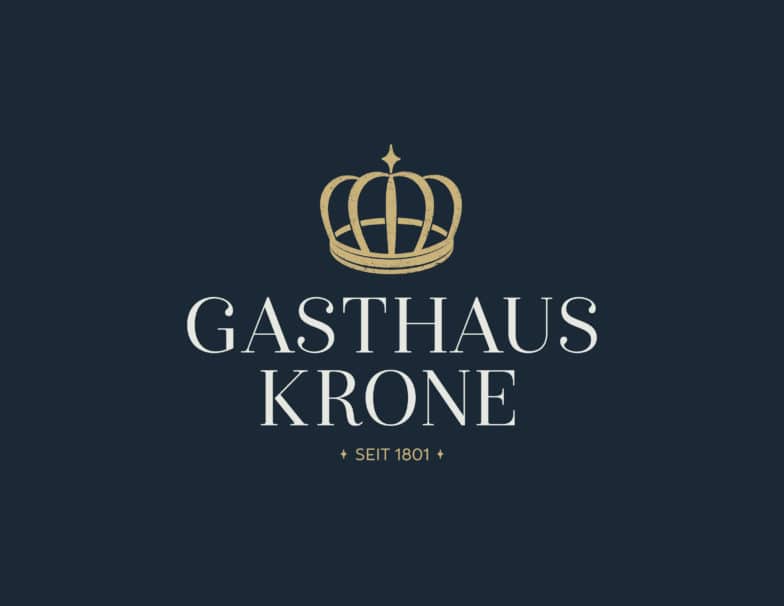
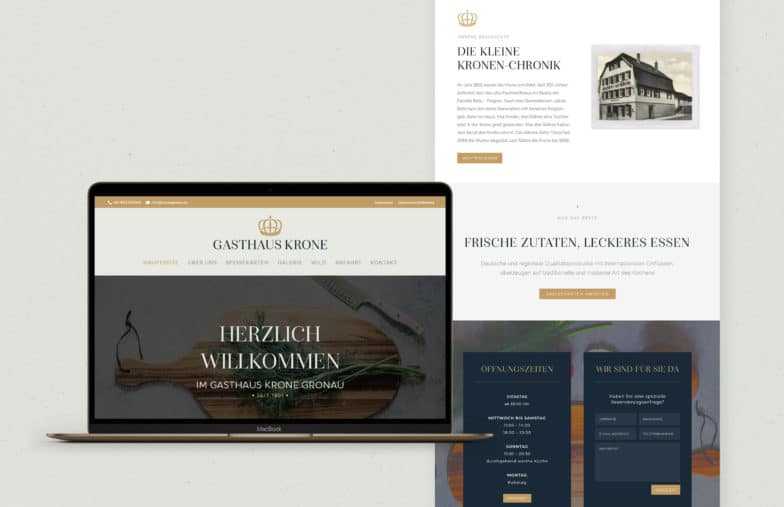
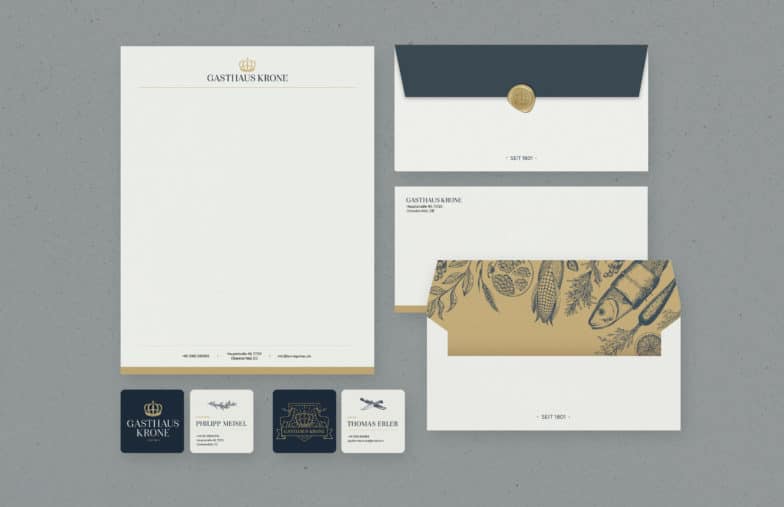
“Their interpretation might be completely different than your own. It’s a matter of figuring out what they mean when they say those words, like asking them for examples of how they perceive modern and timeless. The more you can get out of a client at the beginning, the more successful you and the project will be down the road.”
Over time, Evynne has learned that communication is about 80 percent of her job, whereas the actual designing is about 20%.
“Almost all of design is communication, whether it’s visual or verbal. Your job as a designer is to effectively communicate with your client so they are able to effectively communicate with their audience.”
5. Educate Your Clients
Another role you take on as a freelancer (and you probably didn’t expect) is teacher! Many clients you work with are business owners who may not understand why accessibility matters or why a design needs to look a certain way to fit desktop and mobile. It’s your job during the pitch to show them why you made a design choice.
“It’s also your job as a designer to educate your clients. It’s part of establishing that designer-to-client relationship, which puts them at ease and includes them in the process. Take everything they say to heart, but know when it’s okay to disregard something they say — to turn something they think they want into something they actually need.”
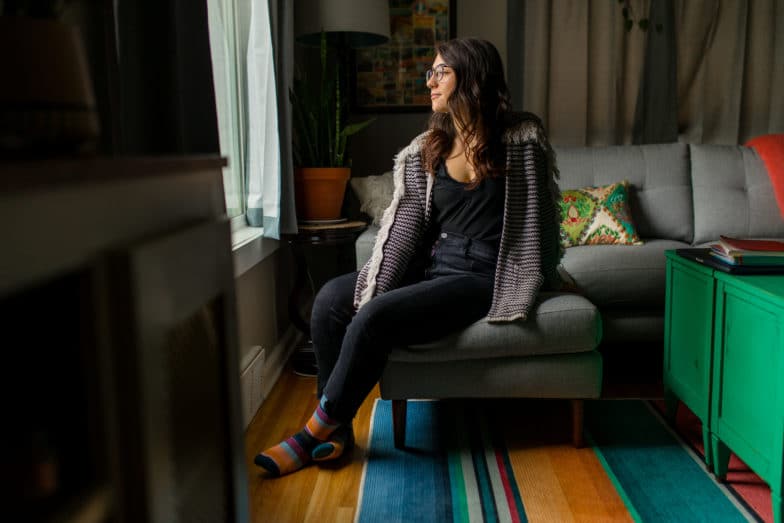
For Evynne, it’s particularly rewarding when she does have to educate a client that’s not technical.
“There is an amazing moment when the light flicks on for a client while you’re explaining something to them because they get it. Educating them makes them more comfortable and allows them to feel like they’re not scrambling in the dark. As designers, we are experts at what we do and we have an obligation to educate our clients — a lot of times you have to take a step away from all the fancy jargon you use on a daily basis and change your language to meet theirs.”
6. Presentation is Everything
Presentation can go a really long way and it’s almost always worth it to put in the extra work. Take the time to create a presentation that resonates with your client and has a touch of you in it. If your personal brand is spunky, but your client is a law office, use your creativity to find that balance between the two. You never want to lose your brand when presenting your design during a pitch.
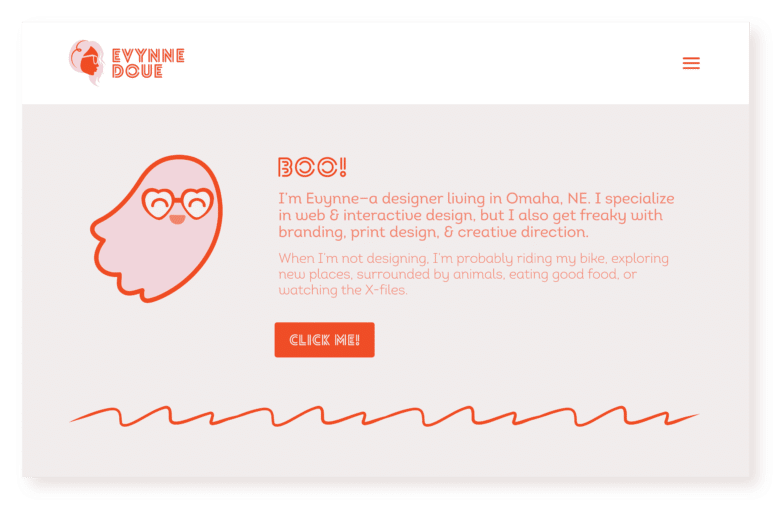
“Go that extra mile and make your presentations super badass. Use your personal brand, put some sparkle into it, make it visual and beautiful.”
7. Show Your Work Sooner Than Later
As a creative, you may want to wait until the design is close to the finish line to show your client. However, showing your mood board and your sketches and concepts early on may save you time in the long run.
“A lot of people don’t know, or remember, that we literally start with a blank artboard. Show your clients sketches and early iterations so they can see all of the work that goes into those early stages of a project. A lot of that delivery is just showing you put a lot of work and care into it.”
Showing early work, even before the contract is signed, can build trust in the relationship even more. Evynne has a passion for helping local businesses and showing her early work has built trust and helped that business even more.

“If you give them an awesome presentation you put together, they can use that to get a sponsorship or funding to grow their business. It also helps them take you more seriously. They’ll walk away trusting you way more in that moment.”
Sometimes, you can totally get a design wrong, even in the early stages. And that’s okay.
“Always be able to back up why you made certain design decisions. I’ve found that you always end up doing more work in the long-run if you send project updates without any context or reasoning behind what you’re showing them visually.”
8. Find a Mentor
There are so many creatives who are in a similar place as you or who want to help you succeed as a freelancer. Connect with someone who’s more experienced that can review your design or presentation, and give you quality feedback. You can also find designers who are at the same level as you who are willing to serve as peer reviewers when you are stuck on a particular concept or design.
“I have two or three peer designers that are on the same experience level as me. I send them early iterations for feedback and they’re almost always able to see something that I wasn’t able to pinpoint before. When you’re ready to deliver your final product, reach out to someone more experienced and have them give you some feedback. It’s so important to have those people you can reach out to.”
9. Don’t Work Alone
Having relationships with other creatives can help you when you’re stuck on a concept or just need to run through a big design pitch with another set of ears. Evynne has created relationships with others and her work is better because of it.
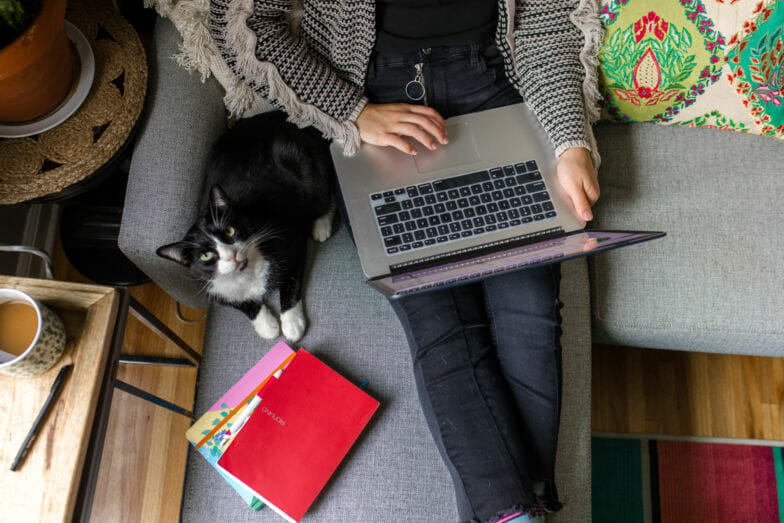
“Don’t be the only eyes on a project — even if it’s just someone you collaborate with! If you’re the only one working on it, you can get tunnel vision. It’ll drive you crazy, and you’ll waste your own time. It’s important to get unique insights from people who aren’t as close to the project as you are. Once you establish those relationships, they’ll come to you for the same things.”
Whether you’re just getting started as a freelancer or looking for some tips to refresh your design pitch, these tips are guaranteed to help you nail the pitch and help you sign more proposals than ever!











